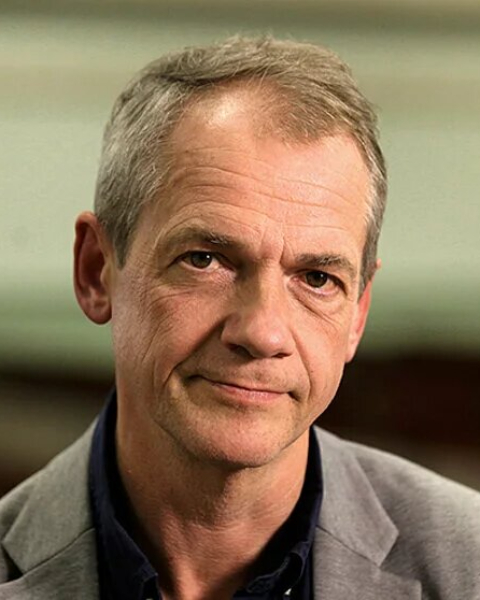Lifetime Achievement
Adult - Anxiety
Lifetime Achievement Award Address: Improving CBT from Molecules to Models
Saturday, November 16, 2024
12:30 PM - 1:30 PM EST
Location: Grand Ballroom G/H, Level 5, Downtown Marriott
Earn 1 Credit
Keywords: Anxiety, Neuroscience, Therapy Process
Level of Familiarity: All
Recommended Readings: Phelps, E. A. & Hofmann, S. G. (2019). Memory editing: From science fiction to clinical practice. Nature, 572, 43-50. doi: 10.1038/s41586-019-1433-7., Hofmann, S. G., & Hayes, S. C. (2019). The future of intervention science: Process-based therapy. Clinical Psychological Science, 7, 37–50. doi: 10.1177/2167702618772296, Hofmann, S. G., Curtiss, J., & McNally, R. J. (2016). A complex network perspective on clinical science. Perspectives on Psychological Science, 11, 597-605. doi: 10.1177/1745691616639283, ,
Level of Familiarity: All
Recommended Readings: Phelps, E. A. & Hofmann, S. G. (2019). Memory editing: From science fiction to clinical practice. Nature, 572, 43-50. doi: 10.1038/s41586-019-1433-7., Hofmann, S. G., & Hayes, S. C. (2019). The future of intervention science: Process-based therapy. Clinical Psychological Science, 7, 37–50. doi: 10.1177/2167702618772296, Hofmann, S. G., Curtiss, J., & McNally, R. J. (2016). A complex network perspective on clinical science. Perspectives on Psychological Science, 11, 597-605. doi: 10.1177/1745691616639283, ,

Stefan G. Hofmann, Ph.D. (he/him/his)
Philipps University of Marburg, Germany
CENTERVILLE, Massachusetts, United States
Presenter(s)
CBT is one of the great success stories of psychiatry. However, we have reached a crisis point because treatment efficacy has not been improving over the last few decades. To overcome this crisis, I will discuss 3 strategies to improve our CBT approach, primarily focused on mood and anxiety disorders. First, insights from translational research and neuroscience can augment existing strategies, even on the molecular level. Second, theory-informed novel therapeutic strategies can enhance treatment success. Third, and perhaps most importantly, we need to revisit and improve some of our basic models and paradigms that serve as the basis for CBT. This may require a radical departure from the latent disease model of the current psychiatric nosology of the DSM/ICD and the absurd proliferation of the protocols-for-syndrome approach. Such a paradigm shift is currently underway, moving toward process-based therapy (PBT). PBT focuses on how to best target and change core biopsychosocial processes in a specific situation for given goals with a given client. This approach recognizes that psychotherapy typically involves non-linear (rather than linear), bidirectional (rather than unidirectional), and dynamic changes of many (rather than only a few) interconnected variables. Effective therapy leads to changes of the entire system toward a stable and adaptive state. This requires gathering high-density longitudinal idiographic data to capture the complexity of psychopathology using a dynamic network approach within the general framework of evolutionary science. I will conclude that CBT can be improved through translational research while embracing an evolutionary model toward psychopathology and treatment change.
Outline:
• The success and limitations of contemporary cognitive behavioral therapy (CBT) will be described.
• Specific strategies will be discussed to overcome these limitations.
• These strategies include: (1) improving CBT based on insights from translational research and neuroscience; (2) enhancing treatment efficacy with theory-informed strategies; and (3) improving the basic models and paradigms that inform CBT.
• These strategies will a departure from the traditional latent disease model and will guide research toward and individualized and a process-based approach to clinical science.
Outline:
• The success and limitations of contemporary cognitive behavioral therapy (CBT) will be described.
• Specific strategies will be discussed to overcome these limitations.
• These strategies include: (1) improving CBT based on insights from translational research and neuroscience; (2) enhancing treatment efficacy with theory-informed strategies; and (3) improving the basic models and paradigms that inform CBT.
• These strategies will a departure from the traditional latent disease model and will guide research toward and individualized and a process-based approach to clinical science.
Learning Objectives:
At the end of this session, the learner will be able to:
- Describe the limitations of contemporary CBT.
- List the 3 strategies to enhance the theory and practice of CBT.
- Discuss alternatives to the latent disease model of mental disorders.

.png)
